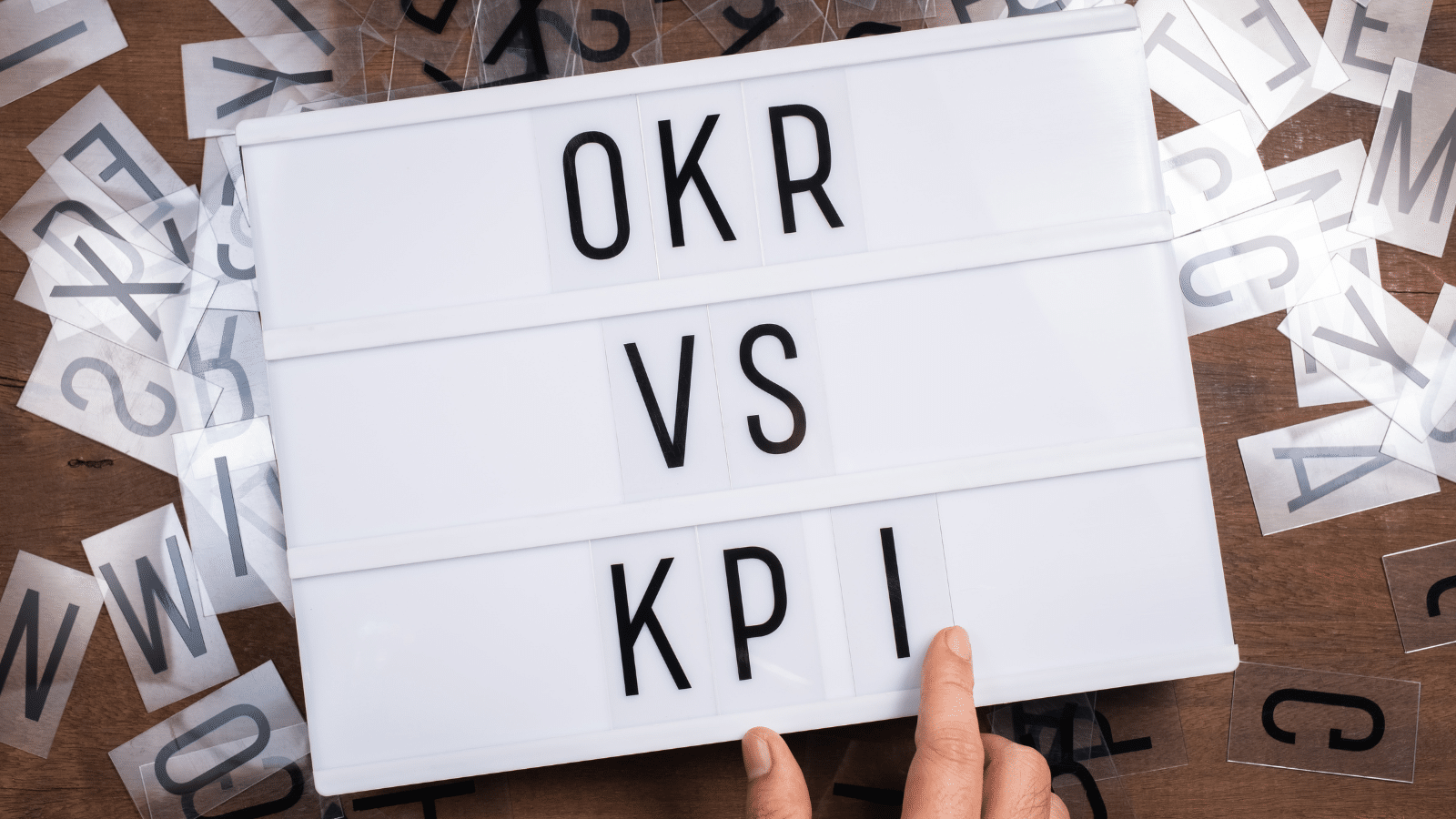OKRs vs KPIs: What’s the Difference & Why You Need Both
As an entrepreneur or leader in your company, you have probably heard about OKRs and KPIs. But what exactly are they, what’s the difference, and which one do you need to pay attention to in order to drive your business’ success? (Hint: it’s both.) At Align, we’re all about making things as easy as possible for leaders–helping you set smart goals, increase conversion rates, and track progress in a streamlined way.
What is an OKR?
OKR stands for Objectives & Key Results. As we wrote about in our blog on choosing the right goal management system for your growing business, OKRs were first introduced by Andy Grove and popularized by John Doerr, who actually helped Google rise to prominence with OKRs. Objective and key results present a simple way to go after goals: objectives define what a company wants to achieve and the key results are how the objective will be achieved. Key results are encouraged to be specific measurable actions within a set time frame, much like the SMART goal approach, discussed here.
The purpose of OKRs is simple: to align all team members around common goals for the company that will drive long-term success. One benefit of OKRs is flexibility – it’s a framework that enables an entire team to agree on common goals, and employees can see how both their personal and collective efforts lead to the success of the company as a whole. Managers may use OKRs to measure their employees and executives can inspire their staff by creating OKRs that the entire company can get behind.
OKR examples are plentiful due to their flexibility–for instance, Google has an objective to design products and services for circularity and reuse materials at their highest environmental and social value. Their key result for this is to have 100% of Made by Google products launching in 2022 and every year after including recycled materials, with a drive to maximize recycled content wherever possible.
For another example, suppose an organization has an overall objective of improving its sales performance across a team. Their key results could be maintaining their sales pipeline with an active $300K each quarter. A second key result could be increasing a lead-to-demo conversion rate from 33% to 50%. Finally, the company may also decide that success means the average deal goes up from $15k to $20k.
An important part of OKRs isn’t just setting them–it’s measuring them. OKRs are results-driven and provide clear direction for where you want to end up. The most successful businesses know they need maps to guide them, and OKRs allow flexibility for change while maintaining the same overall objective.
What is a KPI?
KPI stands for Key Performance Indicator–they are metrics that evaluate the health or success of ongoing activities and quantifiably assess the output of individuals or teams. As discussed in our webinar, there are two different kinds: leading indicators and lagging indicators. A leading indicator is based on the future, and a lagging indicator is based on current conditions. As Forbes put it, “The difference between a leading indicator and a lagging indicator is the fact that a leading KPI indicates where you’re likely to get to, whereas a lagging KPI measures only what you have already achieved.”
The purpose of KPIs is to track progress on a granular level by measuring specific indicators of performance. When KPIs are specific, measurable, attainable, relevant, and time-bound, they help you identify patterns, gauge your company’s overall health, enable growth, use data to make smart decisions, and overall perform better. And a benefit of KPIs is they aren’t just for company leadership–everyone on the team across all industries can benefit from having clearly established KPIs.
An example of a basic KPI is Revenue Per Client (RPC). If a company has $1,000 in annual revenue and has 2 clients, its RPC is $500. This company can use KPIs to track its RPC and set goals and change its strategy to change the amount of revenue per client.
OKRs & KPIs – Which is better?
The question isn’t really “which is better: OKRs or KPIs?” Rather, it’s “What’s possible when OKRs and KPIs work together?” Together, they drive accountability & transparency–every OKR & KPI is owned by an individual team member so everyone knows who is responsible for what. Teams can focus on driving progress for big goals (OKRs), by tracking metrics that tell them how close they are to hitting those goals (KPIs).
SMART OKRs & KPIs
OKRs & KPIs should always be SMART, and tie back into your core values: SMART means Specific, Measurable, Achievable, Relevant, and Time-Bound. When using OKRs and KPIs in this way, they provide a clear roadmap for your organization your whole team can buy into and work toward.
OKRs, KPIs, and Align
A business is as good as its strategy, but sometimes a well-written One Page Strategic Plan isn’t enough. This was the realization that Ben Gootee of Gootee Construction had when he knew that his team generally understood their goals… but couldn’t actually measure them. “They weren’t measurable, and they weren’t on a finite timeline, so we weren’t achieving them in a meaningful way.”
Align was specifically built to help companies measure their goals in meaningful ways. The visualized targets and progress tracking in the software help instill a sense of accountability in every single person. Most companies make it a habit to check on their OKRs at least once a week in meetings. This tracking helps keep everybody on the same page.
Using KPI dashboards to track metrics is a fan favorite and it’s no surprise. Like scores at a football game, KPIs give the team something to measure their performance. An accurate picture fuels the productivity of each business quarter.
The bottom line of OKRs & KPIs is that the only way to improve your business is to measure and review performance. Setting clear objectives, getting your team on board with them, and measuring results is a huge opportunity to improve, track progress, increase conversion rates, and grow. Align helps every step of the way to ensure that your team can accurately measure and communicate what matters.
Check out Align’s OKR software and KPI software today.





